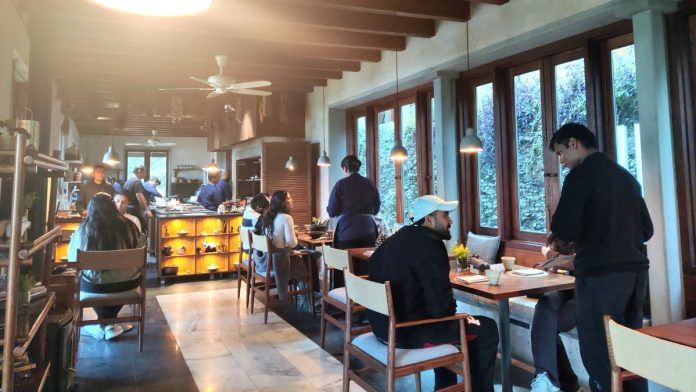Solan: Sitting down for a meal at Naar is an intricate exercise. It means planning a short vacation, maybe catching a flight to Chandigarh, and always a long drive up winding roads to reach Darwa village in Himachal’s Solan, surrounded by cedar, pine, and deodar trees. You can’t just show up. With only 16 seats, the place is the antithesis of impulse eating.
Kurukshetra resident Soumya Singhal drove almost three hours to satisfy her craving for sundarkala wheat noodles, beetroot dirty toast, and morel yakhni with galho. It was her second visit to Naar in 12 months. She first heard about it after it featured in World’s 50 Best Restaurants.
“This place is extraordinary. In the words of my brother and Mexican sister-in-law, ‘Naar can give Michelin-star restaurants a run for their money’,” she said.
What has made Naar a destination dining hotspot is not just Chef Prateek Sadhu’s elaborate tasting menu but the entire experience of warm hospitality in the cold mountains. At the down-to-earth wood-and-slate mountain cabin, the staff pace the 14 courses carefully, offering short stories about each dish but keeping space for conversation at the table. One little cough and they appear with warm water and wild mint. It’s less like a restaurant and more like sitting at your mother’s dining table. Naar, meaning “fire” in Kashmiri, even earned a spot on Time Magazine’s list of the “World’s Greatest Places” last year.
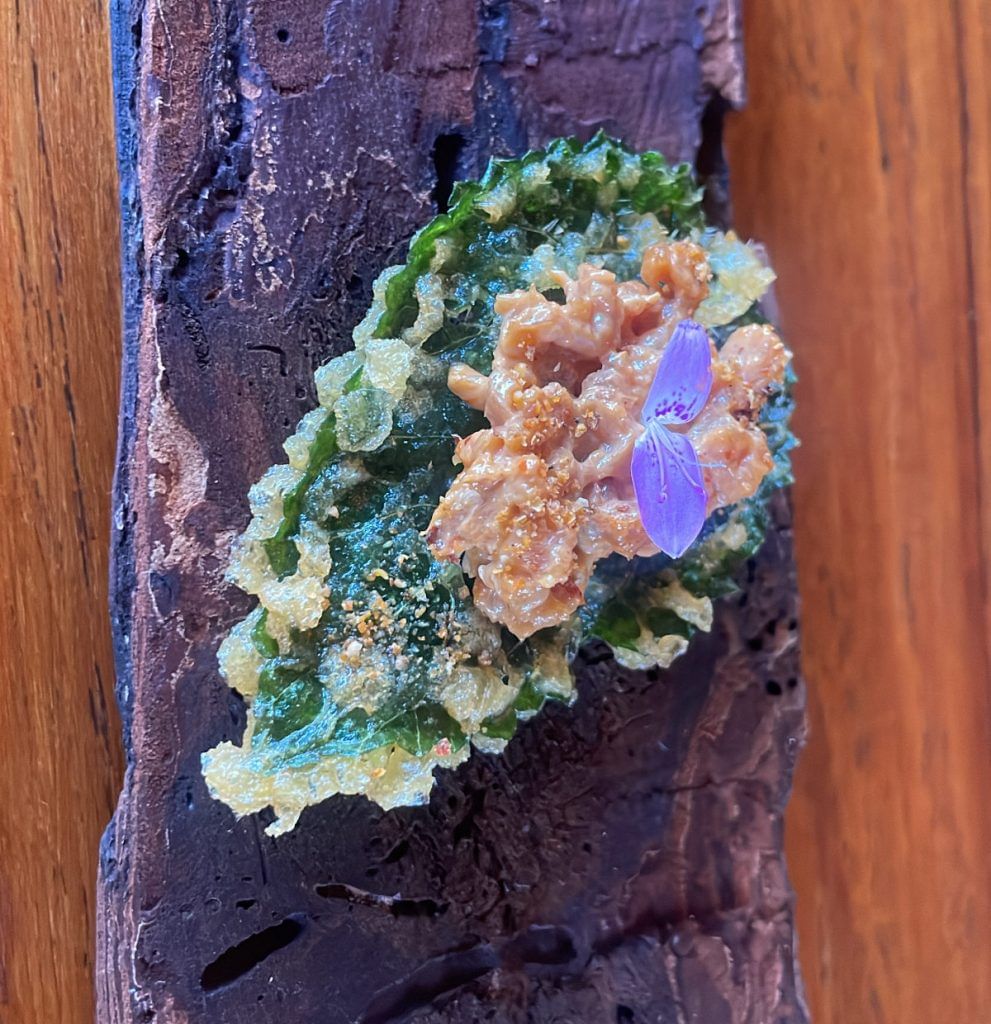
The rustic décor and simple produce conceal real culinary ambition. Chef and owner Prateek Sadhu is trying to build a fresh narrative for mountain food, which for long has been reduced to chai and instant noodles.
“People know little to nothing about mountain food. It’s just ‘pahadon wali Maggi’,” laughed the 39-year-old.
At Naar, Sadhu brings to the table obscure and nearly forgotten dishes from across the Himalayan region — from Uttarakhand’s sundarkala and Kashmir’s mushk budij rice to Ladakh’s khambir bread served with fresh trout. When paired with carefully curated wines or cocktails, the experience is priced at around Rs 14,000 plus taxes.
I want to keep evolving. That’s why our current menu looks nothing like our first one
-Chef Prateek Sadhu
But the premium price is no deterrent for determined gourmands. Naar draws roughly 700 guests every month. Travellers from Delhi, Chandigarh, Ahmedabad, and even the Middle East plan trips weeks in advance. The restaurant has also created employment opportunities for local farmers and suppliers and boosted tourism in the district.
Solan may be famous for the cult-favourite Solan No. 1 whisky and as India’s mushroom capital, with one of the country’s biggest mushroom research centres. But now, Naar is fast becoming part of the district’s identity. Hotel tariffs have risen, and real estate prices have spiked in the area, according to local business owners.
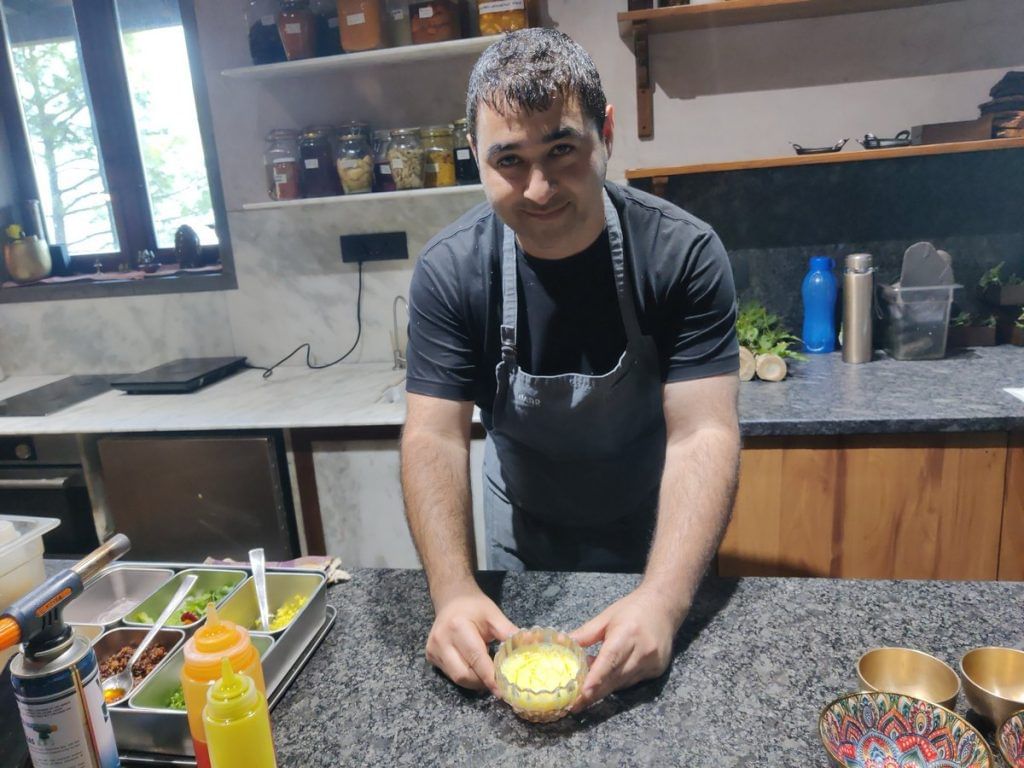
While environmental activists caution that the restaurant’s success may inspire one too many imitators, posing a threat to the area’s delicate ecological balance, Sadhu himself is a votary of sustainability.
For him, the restaurant was a way of escaping relentless commercialism. He left his award-winning Mumbai restaurant, Masque, in March 2022 after running it for six years—the same month it was named India’s best restaurant on the World’s 50 Best Restaurants Asia list.
“I had enough of the city, the noise, the rush, the constant hustle. I craved peace. Now, even the thought of travelling doesn’t excite me. I’d rather stay here in the mountains; this is where I truly feel calm,” Sadhu said.
Also Read: Papa’s is Mumbai’s most elusive hotspot. Lucky few taste its red ants, rabbit, clam cocktail
A risk-taker
One moment, Sadhu is in the kitchen plating a bowl of sundarkala; the next, he is at a guest’s table, kneeling down to share the story behind the dish.
“Sundarkala is our interpretation of a traditional breakfast noodle dish from the Bhotiya community of northern Uttarakhand: hand-pulled noodles served with meat, vegetables, and wild onion-garlic greens,” he explained.
The dish here shows up as finger-millet noodles from Chamoli, set in a fermented sinki (fermented radish) broth with Ladakhi sausage.
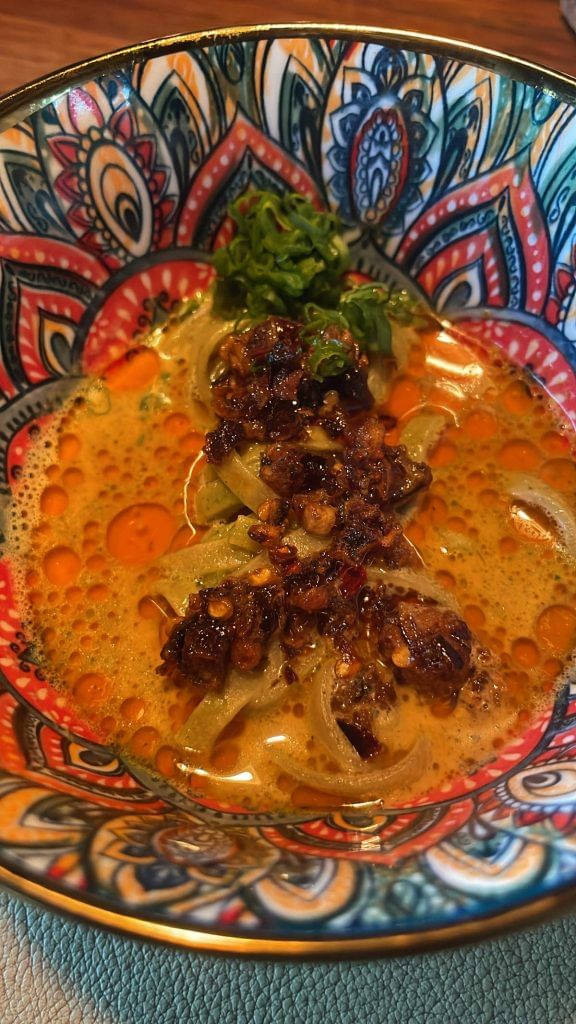
Rigid hierarchies are not followed in the kitchen, according to chef Kamlesh Negi, who heads the kitchen at Naar and has known Sadhu for over 13 years.
“Working with him and even while dining here, you would never feel he is a celebrity chef. He is approachable, open to feedback from everyone on the team,” said Negi.
He added that while planning the menu, experimenting with flavours, and doing tastings, Sadhu never plays the “know-it-all” card despite his experience.
Sadhu has taken Indian cuisine, long stereotyped as butter chicken, pani puri, or samosas, and presented it to the world in a completely new light
-Chef Manish Mehrotra
“He listens first, and that is his greatest strength. As a chef, Sadhu doesn’t follow set paths, he is a risk-taker,” Negi added.
Sadhu and his team introduce every dish through the 14-course meal, giving diners a detailed backstory. The meal plays out over three unhurried hours, celebrating not just the regional produce but also the crisp mountain air, and the vivid hues of autumn.
To preserve this intimate experience, Naar caps reservations at 16 each for lunch and dinner, with no double bookings. Around 30 per cent of diners drive up for the day, while the remaining 70 per cent stay overnight in nearby accommodations.
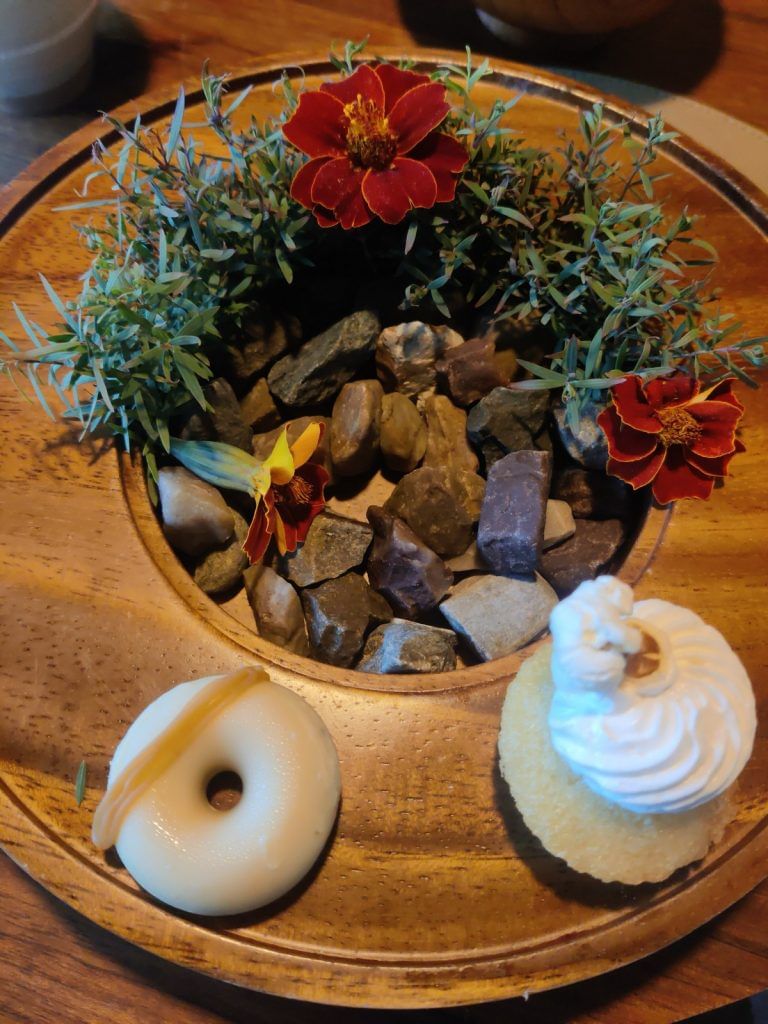
Naar itself is located on the grounds of the 25-acre Amaya resort, where a night costs around Rs 45,000 including taxes, but smaller hotels are seeing a spillover too.
Ajeet Chandel, who manages a small eight-to-nine-room property about a 35-minute drive from Naar, said the restaurant has increased his bookings.
“Earlier, room rates were around Rs 2,500–3,000 per night. About six months after Naar opened, we increased prices slightly. But since March this year, we have been charging Rs 5,500 plus taxes, and guests are happy to pay,” he said.
A romantic forager
Dining at Naar is rather like joining Sadhu at his own dining table. The kitchen and dining area are separated only by low platforms, so they seem like one cosy space. Shelves hold large jars of fermenting ingredients, while a wood-fired hearth fills the room with the aroma of smoking duck and lamb.
Every ingredient is either locally sourced or foraged, from yak cheese to fresh river trout, Gondhoraj lemons, stinging nettle, marigold, cactus, prickly pear, and pine.
It’s not just farm-to-table but forest-to-table cooking.
What also sets it apart is its laser focus on Himalayan cuisine. Instead of merely using local ingredients, it does so to spotlight the distinct culinary heritage of the region.
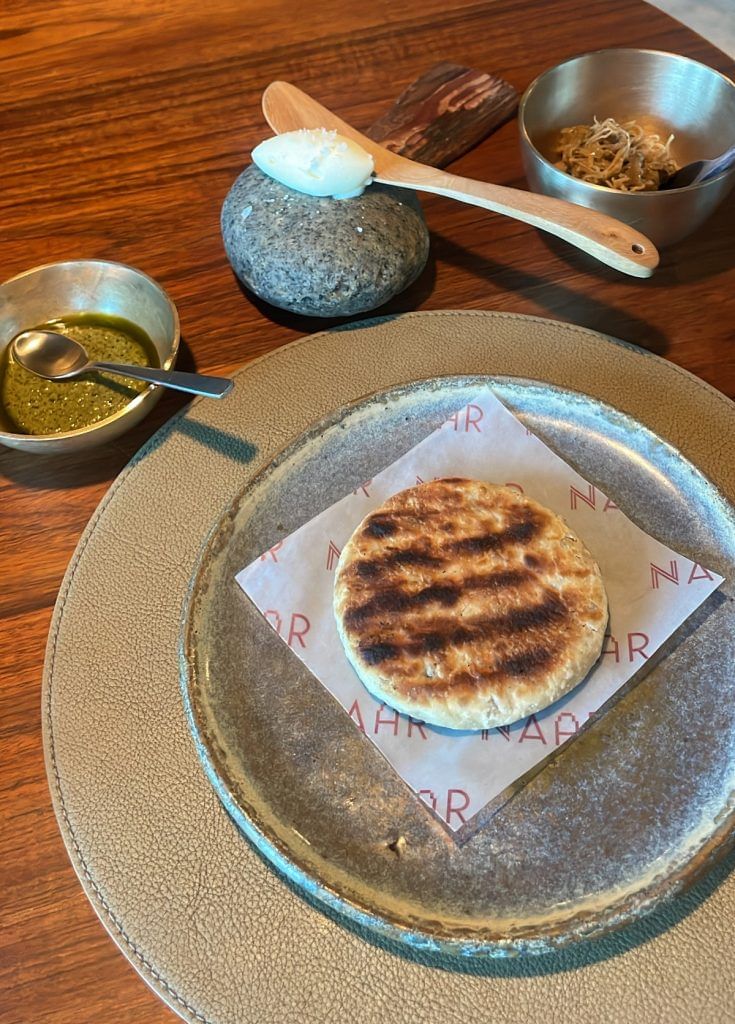
“What began as a conversation about sourcing locally and seasonally has matured into a philosophy that celebrates provenance, sustainability, and a deep respect for the land and its people,” said food writer Vernika Awal.
Her favourite dish at Naar is a broth made with dehydrated turnips and radish. Both vegetables, Awal recalled, were growing right beside the fire pit where the broth was simmering.
“It was a simple yet profound expression of what farm-to-table truly means. There is a rare balance here: deep respect for nature’s rhythm and a refined showcase of culinary skill,” she added.
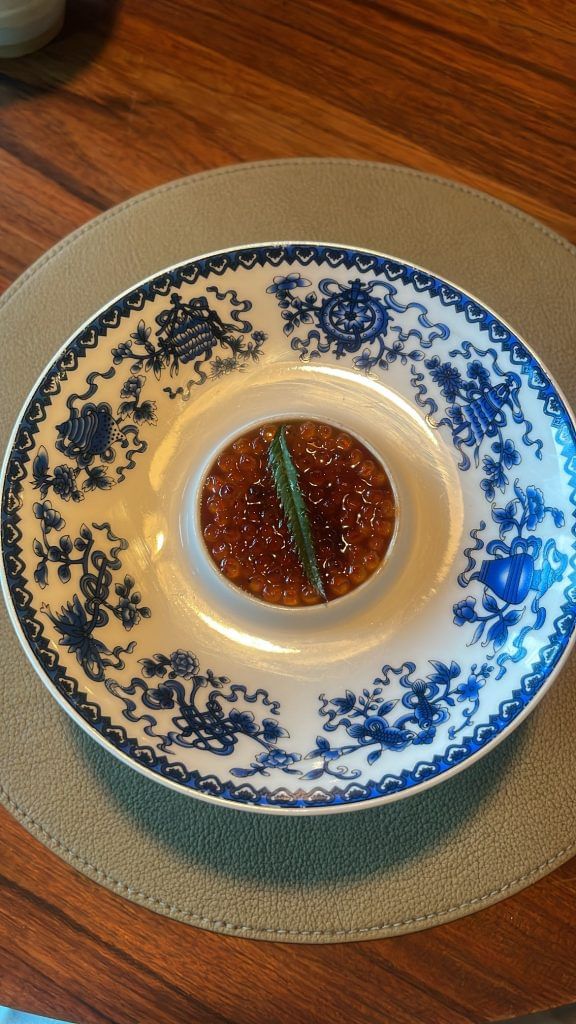
Sadhu’s peers often describe him as a “romantic”. He talks about the produce with the passion of someone describing a lover.
At the onsite farm, where huge trees bearing all sizes of lemon stood in glory under the sunlight, Sadhu gazed upon them affectionately.
“Look at those lemons, you wouldn’t have seen anything like this in Delhi or Bombay. Even the smallest variety is much larger than what you get in the cities,” he said.
Walking past small shrubs of Mexican marigolds, Sadhu’s face lit up.
“We are working on a marigold ice cream, it will be on the menu soon,” he added.
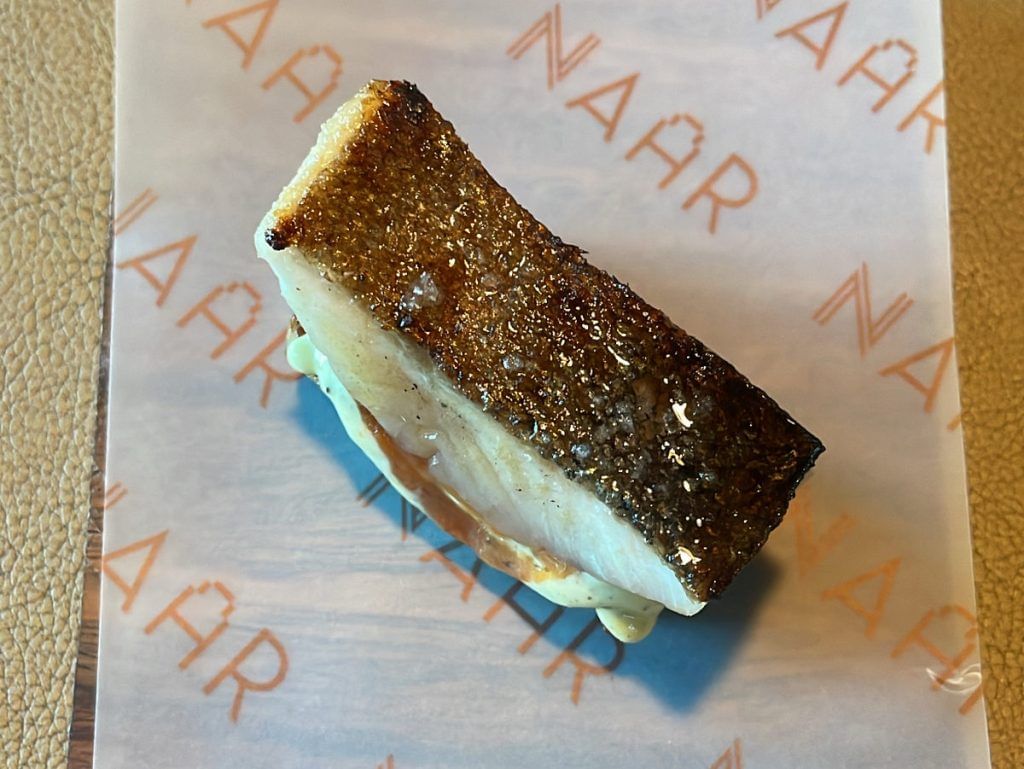
Nearly all the ingredients at Naar come from the farm on the resort property or from nearby villagers. Sadhu says his propensity for foraged, locally produced, and hyper-seasonal produce started at Noma, a three-Michelin-star ‘new Nordic’ restaurant in Copenhagen where he interned 15 years ago. Witnessing Chef Rene Redzepi place Nordic cuisine on the global map, Sadhu made a personal promise to do the same for the Himalayan region.
This approach has worked out well for suppliers. Shakti, a trout seller from Kullu, said his sales have nearly doubled in two years. Earlier, most restaurants wanted trout weighing only around 300 grams. Anything heavier was rejected, leaving him dependent on catering orders from Punjab to sell the larger fish. But ever since Naar entered the picture, almost nothing goes to waste.
“Their monthly requirement is over 70 kg, and they prefer fish weighing between 700 grams and 1 kg. The government rate is Rs 600 per kg, but depending on the weight and quantity, the price can vary,” he said.
The trout is used head to tail. Even the bones are roasted, crushed, and turned into a chilli sauce.
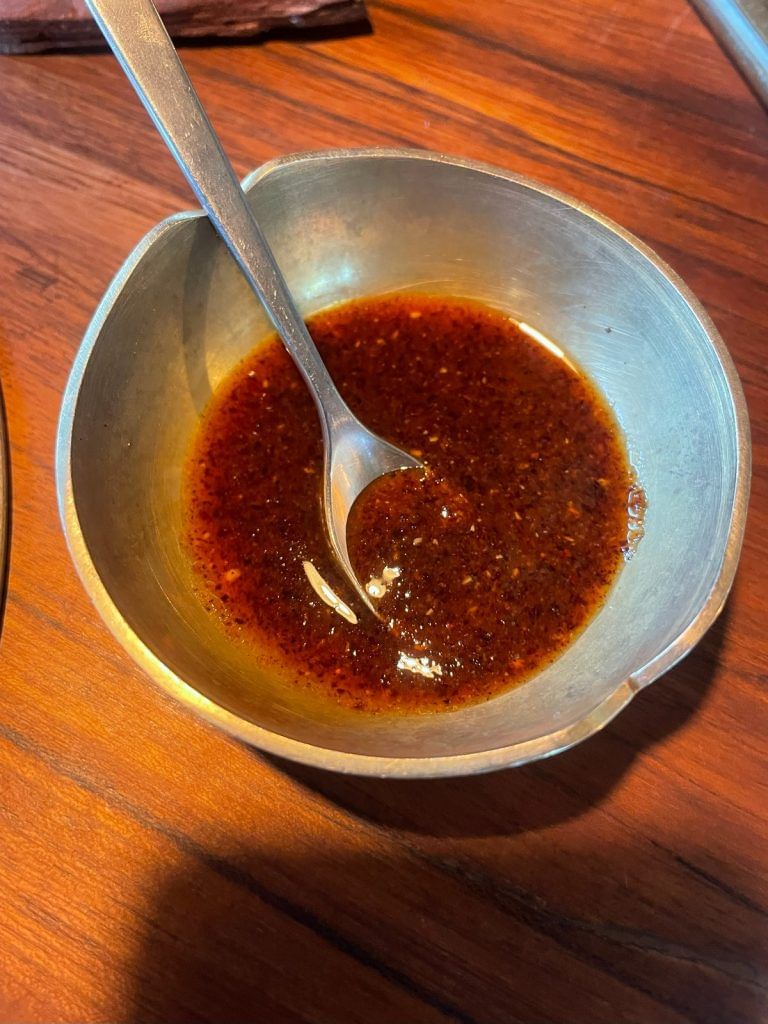
If there’s one decidedly non-Himalayan presence at the restaurant, it’s the pandas. They are everywhere, in different corners, shapes, and sizes.
“Every friend or family member who has ever visited me has brought a panda figurine. It’s my spirit animal,” Sadhu laughed.
Though, unlike the animal’s laid-back image, routine and Sadhu simply don’t coexist.
My mother always cooked Kashmiri food, and as a child, I sometimes got frustrated. But looking back, that food was her way of keeping us close to home, a source of comfort, memory, and identity
-Chef Prateek Sadhu
“I want to keep evolving. That’s why our current menu looks nothing like our first one,” he said.
Earlier menus included experimental dishes like cactus sorbet, yak cheese custard with buckwheat chutagi and tomato jam, and ragi-pineapple cake with burnt milk ice cream. Today, none of these dishes appear on the menu. The focus instead is on reimagining traditional dishes. The ‘Himachali idli’ askalu gets paired with yak cheese and Uttarakhand’s Gahat ka Paratha, traditionally served with white butter and tea, arrives with a fermented duck pickle.
“I’m not a fan of stagnation,” added Sadhu, who right after the sitting was busy sketching out ideas for new dishes with Negi.
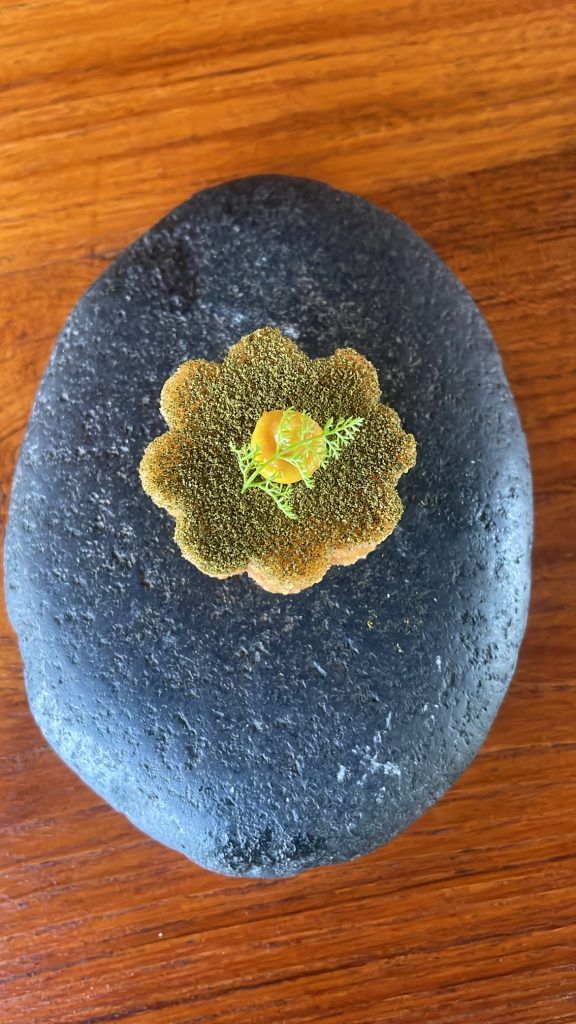
The ‘accidental chef’
When Sadhu announced his plan to open Naar near Kasauli, his friends and family didn’t hold back. Their consensus was that it was a bad idea.
“Who’s going to come all the way there? Are you just trying to feed your ego? Don’t waste your money on a restaurant in the middle of nowhere, go gamble in a casino instead,” he recalled them saying.
But Sadhu chose to trust his instincts. Within a couple of months, Naar proved that his gamble had paid off. When the restaurant was officially announced on 30 September 2023, it received more than 400 calls, reservation requests, and emails, all without a marketing team or PR push.
“I never had to go looking for diners,” Sadhu said. “Within two years, Naar gave me one of the highest profit margins compared to my previous ventures.”

Today, Sadhu stands among India’s most celebrated chefs. But cooking wasn’t part of his original plan.
“I actually wanted to be a pilot,” he laughed, describing himself as an “accidental chef.”
A Kashmiri Pandit, his own Himalayan roots lie in Baramulla. His family was part of the forced exodus of the 1990s.
“We had to leave in a small truck at midnight and ended up living in refugee camps in Jammu,” Sadhu recalled. “My mother always cooked Kashmiri food, and as a child, I sometimes got frustrated. But looking back, that food was her way of keeping us close to home, a source of comfort, memory, and identity.”
When he was in his 20s, Sadhu graduated from the Culinary Institute of America in Hyde Park, New York. After a series of prestigious apprenticeships—Le Bernardin in New York, The French Laundry in Napa Valley, and Noma in Copenhagen—he returned to India to work at Le Cirque in Bangalore.

But entrepreneurship soon called and in 2016, he co-founded Masque in Mumbai’s former Laxmi Woollen Mills compound with Aditi Dugar. The idea was to showcase India’s underexplored bounty through a seasonal, tasting-menu format. Masque’s menu, originally priced at Rs 2,200-4,500, today costs Rs 6,500-7,700 for ten courses.
This style of dining was pioneered in India by Chef Manish Mehrotra in Indian Accent. According to him, Sadhu takes the concept forward.
“Sadhu has taken Indian cuisine, long stereotyped as butter chicken, pani puri, or samosas, and presented it to the world in a completely new light,” Mehrotra said.
His favourite is the sundarkala: “I keep telling him to bottle it and sell it, the flavours are extraordinary.”
Also Read: Get ready for India’s first big fat creamy avocado crop in December. No longer ‘foreign’
USP or drawback?
The nearly three-hour drive from Chandigarh to Darwa village is far from easy. The winding uphill roads, the lack of signage, and the maze-like turns make the journey feel like solving a jigsaw puzzle.
For Mehrotra, this is a dampener.
“Reaching Naar from Delhi is not fun. That’s the only drawback. At times, its very USP, the remoteness, can work against it,” he said.
Environmentalists also worry about its remote location, albeit for different reasons.
They fear that Naar’s concept and its success have set a successful template that can be replicated by more players. Such an increase can upset the fragile balance between economy and ecology.
“You can’t control the chain reaction, and it eventually leads to landscape destruction, chaos. We should learn from what happened in Uttarakhand,” warned environmentalist Anoop Nautiyal.
Food writer Varnika Awal, however, argued that Naar is more likely to inspire responsible culinary outposts in remote, ecologically sensitive regions, paving the way for a new kind of food tourism-driven economy.
“To say that Naar will trigger a domino effect that harms the environment is misleading,” Awal said. “If anything, Naar is demonstrating how sustainability and fine dining can coexist in harmony.”
Sadhu has no plans to expand Naar or add more seats. It will remain an intimate 16-seater.
“Expanding or increasing the covers would only dilute its essence. I am content with what Naar has become; our menu will keep evolving, we will continue to experiment with mountain food,” he said. “I already have bookings lined up for March and April next year.”
(Edited by Asavari Singh)



